This was published 1 year ago
Paradise found: The world’s seven most beautiful islands named
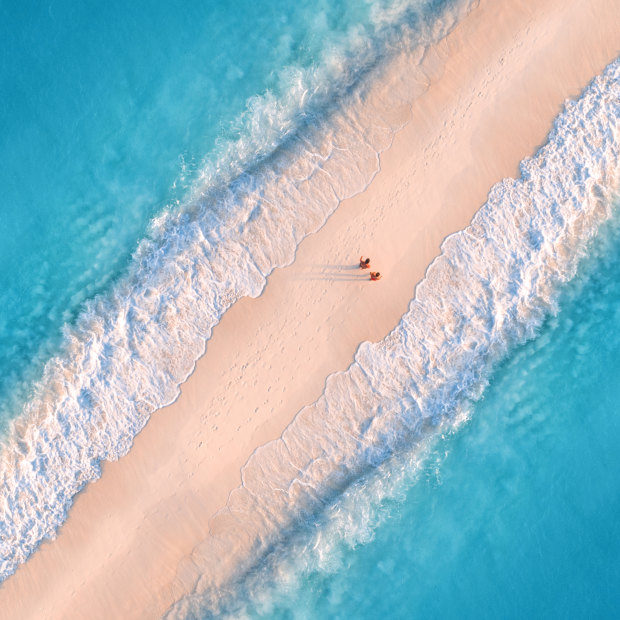
Small out-islands and sandbanks offer the luxury of isolation in Zanzibar.Credit: iStock
They say beauty is in the eye of the beholder, but surely not when it comes to islands. After all, travellers from all over the world agree on the allure of islands from Bali to Santorini, Koh Phi Phi to St Lucia.
It isn’t hard to understand such universal appreciation. Islands are magical, rising from the ocean in eruptions of cliffs, volcanoes or verdant hills, and often graced with pastel-painted fishing villages, fortified old towns, whitewashed chapels or smiling Buddhas.
For those from less flamboyantly coloured places, tropical islands are the ultimate travel cliche. Think of a beautiful island and you might imagine white sand, peacock lagoons, hula-swaying coconut trees and smiling, languid people.
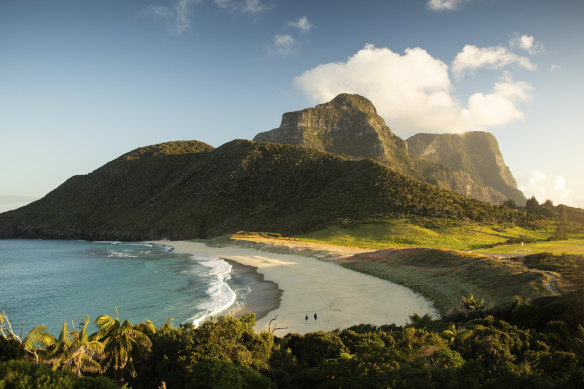
Blinky Beach looking towards Mount Lidgbird and Mount Gower, Lord Howe Island.
With toes in sand and cocktail in hand, we fantasise about telling our bosses we’re never coming back.
The beauty of islands is far from only tropical, however. Norway’s Lofoten archipelago proves chilly islands can be glorious.
Parched Mediterranean islands have their own particular drama, and islands in densely populated places such as Japan and Java have a beauty honed from centuries of human landscaping.
Islands are places of refuge, escapism and relaxation, but the seduction isn’t merely on the surface.
Islands are places apart, whose relative isolation has allowed unique hybrid histories and cultural mixes to flourish – or has preserved a single distinctive society found nowhere else.
Small wonder inquisitive travellers appreciate these quirky, charming, independent-minded places.
Our regular contributors, who have cumulative centuries of stickybeaking travel experience between them, certainly leapt at the chance to nominate their favourites.
We hope these musings inspire you to recall the lovely islands you’ve already visited and encourage you to see some more. – Brian Johnston
Rab, Croatia
By Brian Johnston
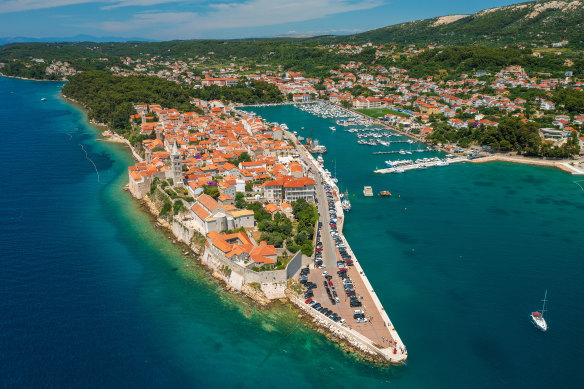
Rab: the shy simplicity of this small red-roofed town, and its lack of tourist crush, is hard to beat.Credit: iStock
Croatia has many beautiful islands, but Rab takes you away from the biggest crowds and lavender-scented cliches to offer something different.
For a start, it hides its beauty when approached from the mainland: the high cliffs and barren, rocky landscape of the island’s east might as well be on the moon.
Yet in the interior, olive groves and vineyards add a flush of silvery colour while, up north, the twin-headed Lopar Peninsula erupts in greenery and pine trees. And the adjacent Kalifront Peninsula has some of the Mediterranean’s last stands of holm oak trees.
Cycle and hiking trails wander across this enchanting landscape. The gentle coast is nibbled by emerald coves; no better place to anchor a chartered yacht. Swim in the marvellously clear water and you may spot drifting seahorses.
The Lopar Peninsula’s sandy beaches are the best in Croatia, where otherwise (even further south on Rab) you often get a more gravelly, foot-wincing experience.
Rajska Plaza, nicknamed Paradise Beach and often cited as among the world’s best beaches, is a luscious horseshoe of sand on a blue bay set against purple hills.
Beware (or rejoice): Rab is a hub for naturalists, with Sahara Beach the most striking for kit-offing.
Rab has cultural beauty too. There are far more important Mediterranean towns than Rab, but the shy simplicity of this small red-roofed town, and its lack of tourist crush, is hard to beat.
Its history is just as layered: Romans, Venetians, Austro-Hungarians and Italians have contributed to the architecture.
Swim out from the rocky shoreline at Banova Vila Beach, look back, and you get a wonderful view of the fortified town and its spires rising from the sea. You may even be serenaded by music floating from the windows of the town’s classical music school.
Back on land, Venetian campaniles rise above shaded streets. Cheerful-looking saints wave from church rooftops, and cats doze on crumbling walls.
Peer through the iron grilles of churches into dim interiors for a glimpse of gilt statues, melancholy frescoes and marvels such as a saint’s skull and weeping Christ. Old ladies in black shawls genuflect beneath baroque cherubs.
Walk along the medieval battlements or clamber up the Great Bell Tower at sunset, when church spires and the Mediterranean beneath turn pink and orange.
Or perhaps head to Kamenjak, Rab’s highest point, at 408 metres, for views over the whole adorable island, and rejoice. See croatia.hr
Bora Bora, French Polynesia
By Julie Miller
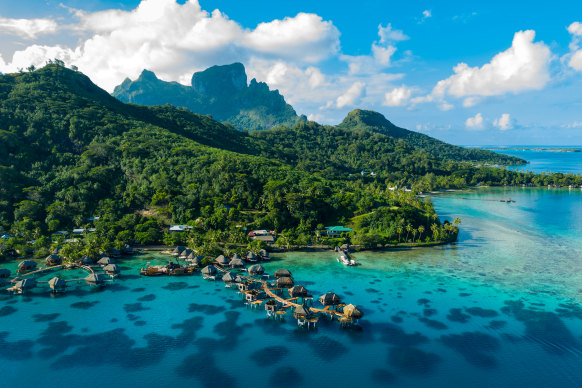
Bora Bora bliss.Credit: iStock
French Polynesia’s leading lady is a supermodel, beautiful in every beholder’s eye. And when you’ve been honoured with accolades as superlative as “heaven on earth” and “pearl of the Pacific”, who cares if people think you’re overpriced, superficial or “boring boring”? Haters gonna hate.
In ancient times, she was known as “pora pora mai te pora”, meaning “created by the gods”; and indeed, no human attempt to capture her otherworldly majesty in paintings, photographs or words does her justice.
Jaws are dropped and gobs are smacked when you first clamp eyes on Bora Bora.
Nothing can quite prepare you for the vision, best experienced from the deck of a cruise ship or yacht at first light: the riot of colours, the perfect symmetry, the sheer drama as the mist-shrouded, jagged peak of Otemanu tumbles into a jewel box lagoon, fringed by palm-clad motus cushioned in pure talcum.
This fragrant paradise has long lured adventurers and hedonists, for its carefree culture and the siren song of mermaids. It’s little wonder that Bora Bora is today one of the most coveted honeymoon destinations on the planet, an idyllic backdrop for a momentous declaration of love.
Romantic dreams come true in the birthplace of overwater bungalows, dangling over a mesmerising aquarium of pure gin where turtles, rays and dolphins flit and flirt.
Stand waist deep in Bora Bora’s translucent lagoon, and its marine life comes to you: reef sharks – the souls of ancestors in Polynesian tradition – circle lazily, non threateningly, secure in their apex role within the largest designated shark sanctuary in the world. Velvet-bellied stingrays flutter to the surface for a smooch and neon damsel and butterfly fish dart through one of the healthiest coral reefs on the planet.
And that’s the soul-deep beauty of this pageant queen – a mindful approach to tourism, restrictions on numbers and sustainable environmental practices have allowed Bora Bora’s dazzle to flourish, preventing her from the fate of so many other natural beauties – stripped of their assets and victims of the fame game. See tahititourisme.com.au
Zanzibar, Tanzania
By Ben Groundwater
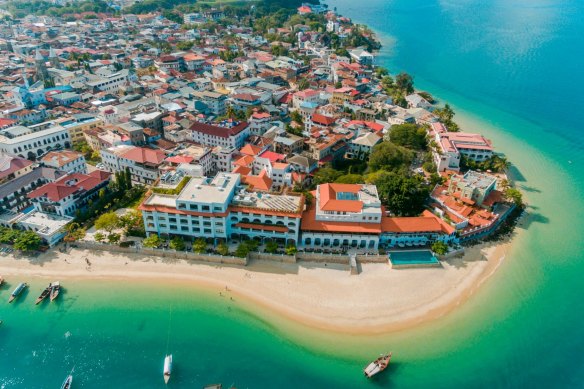
Houses hug the coast in Stone Town, Zanzibar.Credit: Moiz Husein/iStock
I suppose if you really like white-sand beaches lapped by crystal clear water in the shade of languidly draped palm trees, you can have all that.
If you fancy the idea of thatched-roof bungalows providing succour from the hot sun, and coral reefs thriving in the warm Indian Ocean just a short paddling distance from shore, you can have that, too.
Zanzibar has these stereotypical trappings of paradise. If you crave the classic forms of island beauty, you can certainly have them.
All along the many coastlines of Unguja, the main island of the Zanzibar archipelago, visitors will discover these delights repeated over and over. Sand so white it’s blinding in the hot sun. Water so clear, so warm that you barely realise you’ve stepped into it. Palm-lined shores that go on forever. Small out-islands and sandbanks that offer the luxury of isolation.
You can have all of that, if that’s what you like, but to me, the true beauty of Zanzibar, this semi-autonomous set of islands off the coast of Tanzania, lies not in the features that it may share with various other tropical outcrops around the world, but in the places and the culture that make it unique, in a history that has seen so many of the world’s great empires arrive and disappear.
Consider Stone Town, the old centre of the largest settlement on Unguja. It was originally settled thousands of years ago by Bantu-speakers from the African mainland, then ruled by the Portuguese, then taken over by Oman, then colonised by Britain, before finally achieving self-rule.
Today, the city’s narrow streets speak of this diverse and occasionally brutal history, of sultans and slave-traders, of spice-sellers and castaways, of those from all walks of life and all corners of the globe who called through here and sometimes decided to make Zanzibar their home.
There’s a rough beauty to modern-day Stone Town, charm with an edge, remnants of historic struggle mixed with signs of modern-day concerns.
So many cultures and civilisations have made their mark here, both literally and figuratively. Facades crumble, paint flakes, but the spirit of Zanzibar remains as bold and as colourful as you could ever hope to discover.
So yes, the standard hallmarks of island beauty are here, as stunning as they are anywhere in the world – which you can have if you want. But this is a tropical island with more. See zanzibar.com
Lord Howe, Australia
By Michael Gebicki
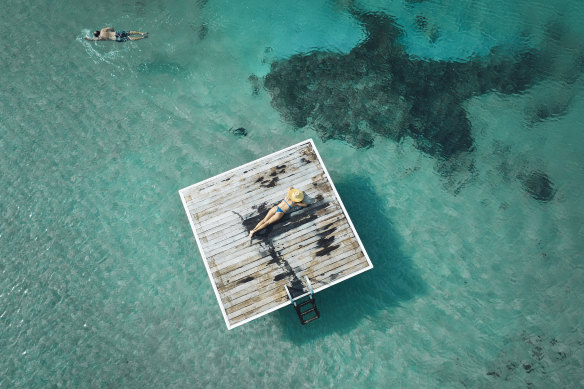
Laid-back at Lord Howe Island.
By just about any measure, Lord Howe Island is an astonishing place. The shallow lagoon on the western side of this World Heritage-listed island cradles the world’s most southerly coral gardens.
The surf beaches on its eastern shore are bracketed by cliffs that heave themselves vertically from the sea.
Forests of banyan trees shadow the interior and the island’s south is dominated by the 875-metre-high peak of Mount Gower, dripping with rainforest and often wreathed in a halo of cloud.
Warm and cool currents collide here, spawning a wealth of marine life that includes giant clams, sea turtles, clownfish, lionfish, tuna, butterfly fish and a wrasse known as the doubleheader, a species unique to the island’s waters.
Its bird life is incredible. One of the tiny islands that form a chain between the Solomons and New Zealand, Lord Howe Island is a perch for seabirds in their migratory journeys.
White terns drift like snowflakes among its kentia palm forests and ternlets nest along the base of its cliffs.
This is the only place on earth where providence petrels breed and one of the greatest concentrations of the fabulous red-tailed tropic bird can be found along the island’s northern cliffs.
Barely 11 kilometres end-to-end, the island’s natural wonders throw down a challenge to legs and lungs. Every visitor walks, hires a bike, snorkels or paddles a kayak around the lagoon.
One of the loveliest of the island’s hiking trails rises from Settlement Beach to the summit of Mount Eliza, from where the view takes in the opal blue of the lagoon and the hulking peaks of Lidgbird and Gower.
Along the way the track passes through a swooning forest of native kentia palms, once the mainstay of the island’s economy, and the wreck of a Royal Australian Air Force Catalina flying boat which crashed here in 1948 when it overshot its landing in the lagoon.
You can’t help feeling this is the way the world should be – green and wondrous, quirky but nicer – and uncrowded, even down at the lagoon beach on a hot day.
I’ve notched up four visits, and when I’m there, I wake every morning feeling blessed. If this isn’t paradise, I’m using the wrong dictionary. See lordhoweisland.info
Sicily, Italy
By Ute Junker

Sicily delivers plenty of poster-perfect vistas like this in Cefalu.Credit: iStock
It’s a small fragment of a thing, insignificant compared to some of the glories scattered across Sicily, and overlooked by many of the visitors who flock to this island each year.
Yet when I visit Sicily’s capital, Palermo, one of the places I always come back to is this empty stone room in what remains of La Zisa palace.
Built a thousand years ago by Sicily’s Norman rulers, the Islamic-inspired La Zisa once sat in the middle of an Arabic pleasure garden, a place of brightly-blooming flowers and reflective pools, shady trees and ever-flowing water.
Much of the surrounding land has been concreted over and covered with tall buildings and car parks, and imagining its past splendours can be challenging.
Here in this chamber, where the king and his courtiers once sat on ornate furniture, cooled by breezes playing over the water channels carved into the floor, you can still see scraps of now-vanished opulence.
Fragments of frescoes reveal cheeky cherubs and voluptuous nudes; peacocks and palm trees feature on a gloriously gilded Byzantine mosaic; and above it all sits a honeycombed alcove of magnificent Arabic muqarnas.
Untroubled by orthodoxy, the builders of this palace drew on disparate cultures to create a style that was uniquely Sicilian.
Like many islands, Sicily delivers plenty of poster-perfect vistas, from its coastline scalloped with bays and beaches to the snowy heights of Mount Etna.
For me, Sicily’s true beauty lies in its cultural riches, an unlikely trove of treasures that reflects the many different invaders drawn to this island, its fertile soils and its strategic position in the Mediterranean.
There are few other places where you can hopscotch your way through the centuries as easily as in Sicily.
Travel all the way back to the days of the ancient Greeks at Agrigento where some of the best-preserved Grecian temples in the world sit surrounded by orchards that greet spring full-throttle with heavy clouds of blossoms.
In the mood for the grandeur of Rome? The mosaics at the Villa Romana del Casale, depicting intricate scenes including hunters tracking wild animals in Africa, are simply astounding.
Love a bit of baroque? You will find it hard to resist cities such as Catania, Noto and Modica, which were rebuilt from the rubble of a devastating earthquake in 1693 in Sicily’s flamboyant baroque style.
My personal favourite remains that distinctive Arab-Norman architecture, famously found in the glittering mosaics at the cathedral of Monreale and in Palermo’s jaw-dropping Palatine chapel, the full embodiment of the traces glimpsed fleetingly at La Zisa. See visitsicily.info
Ibo Island, Mozambique
By Nina Karnikowski
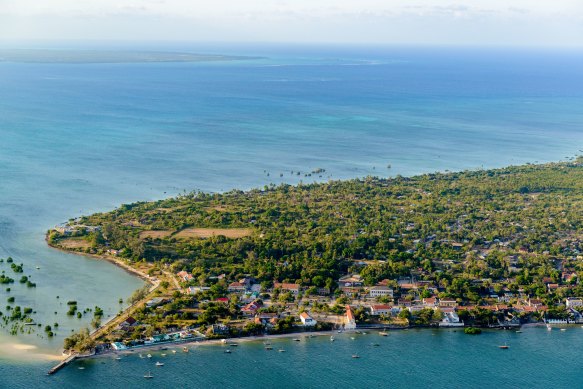
Ibo Island – where life is 10 times slower.Credit: Getty Images
It was the stuff of which honeymoon dreams are made. My husband and I, married just two weeks prior, eased down onto Ibo Island in northern Mozambique’s Quirimbas Archipelago, in a six-seater plane.
Our terror of light aircraft was momentarily swept away by the sight of lush coconut groves and the winking Indian Ocean below.
The charm of arriving at an “airport” consisting solely of a sign with the word “Ibo” written on it, was only enhanced by the open-sided Jeep drive along the dusty road to our hotel. As we flickered in and out of palm tree shadows, local kids raced barefoot behind us.
Since Ibo was once an important Muslim trading port that was then fortified in the early 1600s by the Portuguese, it is peppered with crumbling Portuguese villas.
Ibo Island Lodge, the only hotel on the island, was made up of three of these restored, 150-year-old Portuguese mansions set right on the seafront.
If it’s true that real beauty resides in flaws, this whitewashed, romantically rustic, bougainvillea-shrouded eco-lodge is surely one of the world’s most stunning.
We had read that Ibo Island was “the edge of nowhere” and an island of mysteries, and within minutes of arriving it was clear that this was Mozambique’s best-kept secret.
With no electricity on the island, there was a distinct lack of noise or pollution, and life felt 10 times slower.
Walking along the battlements of the 18th century Fort of Sao Joao one afternoon, our only soundtrack was the crash of the ocean, and the gentle hammering of the silversmiths the island is known for.
Ibo’s sunsets are famously picturesque. But see that sunset on a traditional dhow sailboat, as we did after a day spent snorkelling and kayaking through waters vibrating with marine life, and its beauty is unparalleled.
Sipping champagne on the dhow’s roof while looking back at the island, burnished gold in the day’s last light, we decided that it was indeed the world’s most beautiful.
We decided again on our final morning, when we were ferried out to sea with a full mahogany dining suite for breakfast on a disappearing sandbank.
Only when the crystal-clear water was lapping at our ankles could we accept that it was time to pack up and leave. See visitmozambique.gov.mz
Saint Helena, Britain
By Catherine Marshall
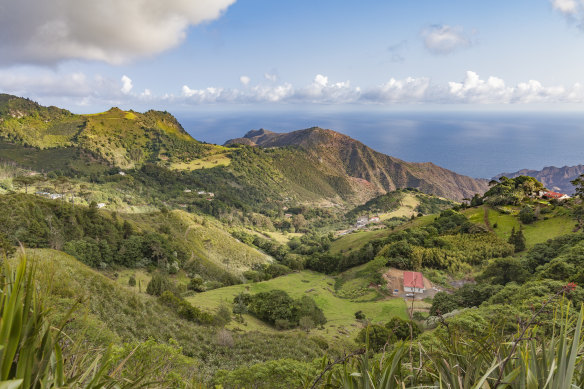
The remote, rolling hills of Saint Helena.Credit: iStock
“Beautiful walk with Marco,” I write in a logbook left for walkers in a post-box at the end of a trail on one of the world’s most remote islands. “Not a soul out except for the sheep and a grumpy donkey.”
If beauty equals solitude, this is where to find it. Below me, the Atlantic Ocean flows unbroken all the way to Antarctica. South America is a week-long voyage to the west.
The closest landmass, Africa, is 2000 kilometres distant. No wonder Napoleon was exiled to this British Protectorate, a once-uninhabited island affixed like a fleck of mica to an oceanic continent.
His now-empty tomb is shaded by Norfolk pines planted by Captain Cook; they tell a seafarers’ story.
“Around 1000 ships docked here each month before the Suez Canal was built,” says Marco Yon, my guide.
More recently, it took five days on the RMS St Helena from Cape Town to reach the island.
Against precipitous odds, an airport was constructed six years ago; flying in from Johannesburg, I spy volcanic crests emerging from the blue, cliff-sides falling away like molten chocolate, the moors undergirding Longwood, Napoleon’s house, and, swaddled in cloud forest, Diana’s Peak.
The plane will return in a week – too soon, I fear; so ecologically diverse is this 16-kilometre-wide island, it is under consideration as a UNESCO World Heritage Site.
“Growing up, you can’t wait to leave,” Yon says. “And only when you become an adult, really, do you realise what a gem we have.”
Around 4000 “Saints”, as they’re called, live here. The sanctuary’s physical splendour is complemented by their guileless hospitality – offered in a lyrical patois that attests to their cosmopolitan heritage.
More than once I’m stopped on the streets of Jamestown, a settlement oozing glacier-like between cliffs towards the sea, and invited to join their gatherings.
As Jamestown amasses in that crevice, so do its people; they dissipate as Yon and I ascend switchback roads to a hinterland crammed with the endemic flora and fauna catalogued by Darwin on his own visit, cross the wastes of Deadwood Plain, its trees buckled by trade winds, and cut a trail past that grumpy donkey on our way to Blue’s Peak.
This is one of several “post-box” walks, trails leading to ever more extraordinary vistas. That lonely post-box demarcates our destination.
Far below, Speery Island is luminous with guano. Pantropical dolphins dance in the surf; they’ll be joined by whale sharks in January. Beauty is in the eye of the beholder; behold, then, the world’s most beautiful island. See sthelenatourism.com
Runners-up: Seven more beautiful islands
Huahine, French Polynesia
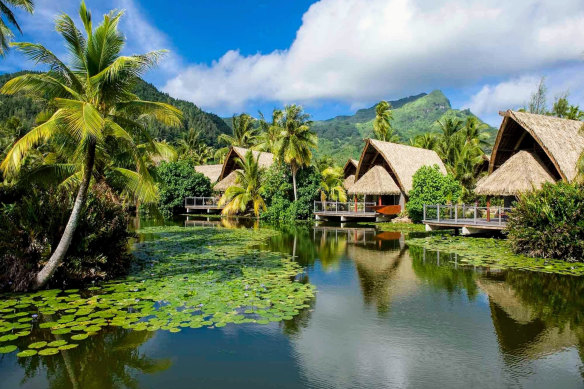
Huahine, one of French Polynesia’s Society Islands.Credit: iStock
A necklace of motus or reef islets provides classic Polynesian white sand, peacock-blue water and absurdly flamboyant fish. Scattered archaeological sites are a reminder of Huahine’s former importance but these days the chief action is the mid-afternoon return of fishermen, slow shuffle of island women with frangipani-twisted hair, and the twanging laments of ukulele players. See tahititourisme.com
Sardinia, Italy
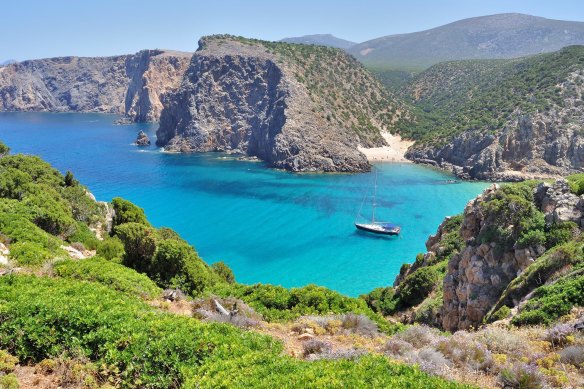
You don’t need a superyacht to enjoy Sardinia.
There’s a reason why the world’s superyacht-owning uber-rich choose northern Sardinia, around Porto Cervo. It’s because it’s one of the most jaw-droppingly, brain-breakingly, breath-takingly beautiful places in the entire world. Fortunately, you don’t actually need a superyacht to enjoy it. See sardegnaturismo.it
Vancouver Island, Canada
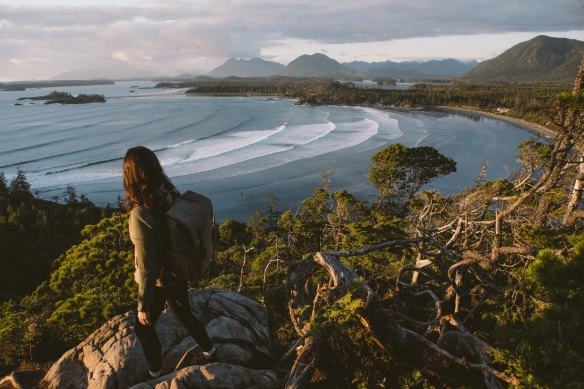
Vancouver Island: Wild allure.
Green or blue? Whether you swoon at the sight of endless rolling forests or prefer to explore pristine waters, the wild allure of Vancouver Island, off Canada’s Pacific Coast, is hard to resist. Hiking beneath the towering trees of its lush temperate rainforests is sheer exhilaration, even as you keep an eye out for the bears – both grizzly and black – that roam here. See hellobc.com
Reunion, France
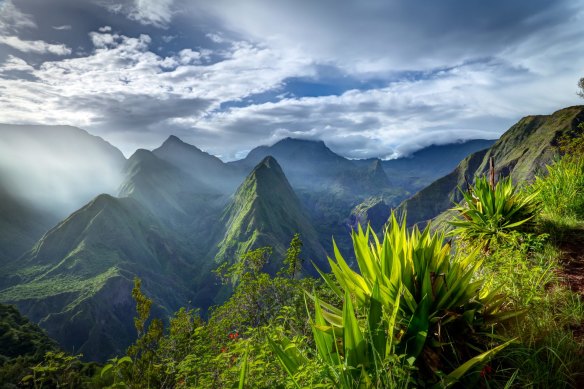
Cirque de Mafate caldera on Reunion Island. Credit: iStock
A pin-prick on the map off the coast of Madagascar, Reunion, classified as a French “department” territory is a bougainvillaea-hung hothouse with a French accent, which means great pastries, shambolic parking and a freeway system where every car violates the speed limit. The beaches are lovely, the sea is languid and warm and the interior is a lunar landscape forged by towering volcanoes and bridled with Garden-of-Eden greenery. See en.reunion.fr
Culion, the Philippines
Once the world’s biggest leper colony, this island in northern Palawan is inhabited by the descendants of those who were banished here. Their history and legacy enriches the tropical beauty for which the region is best known: sinuous reefs, limpid bays, unmitigated hospitality. Stop by the Spanish-built La Immaculada Concepcion Church, an architectural testament to the Jesuit priests who cared for sufferers of Hanson’s Disease (leprosy). See philippines.travel
Koh Kood, Thailand
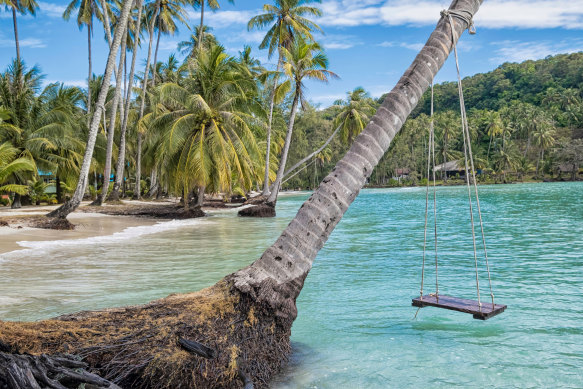
Koh Kood is Thailand’s b est-kept secret.Credit: iStock
Off the beaten tourist path near the Cambodian border, Koh Kood is not only one of Thailand’s most remote islands, it’s also arguably its prettiest, with lush green hills cascading into becalmed waters so pure, it’s like someone left the tap on. A smattering of resorts, from barefoot chic to super-luxe, cater to tranquillity-loving travellers who are already privy to Thailand’s best kept secret. See amazingthailand.com.au
Sumba, Indonesia
One of Indonesia’s last wild frontiers, Sumba is all thick jungle, rolling rice paddies, traditional kampung villages, unspoilt beaches where wild horses sometimes roam, and some of the world’s best surf breaks. There are a few handfuls of eco-hotels and surf camps, but most of the island is just as it was centuries ago. Sumba’s greatest beauty, though, has to be how alive the indigenous Marapu belief system still is, rooted in animism and the worship of ancestors. See indonesia.travel
What’s your choice for the title of world’s most beautiful island? Write to us at travellerletters@traveller.com.au. The seven most interesting letters will win a copy of The Islands Book ($49.99) by Lonely Planet.